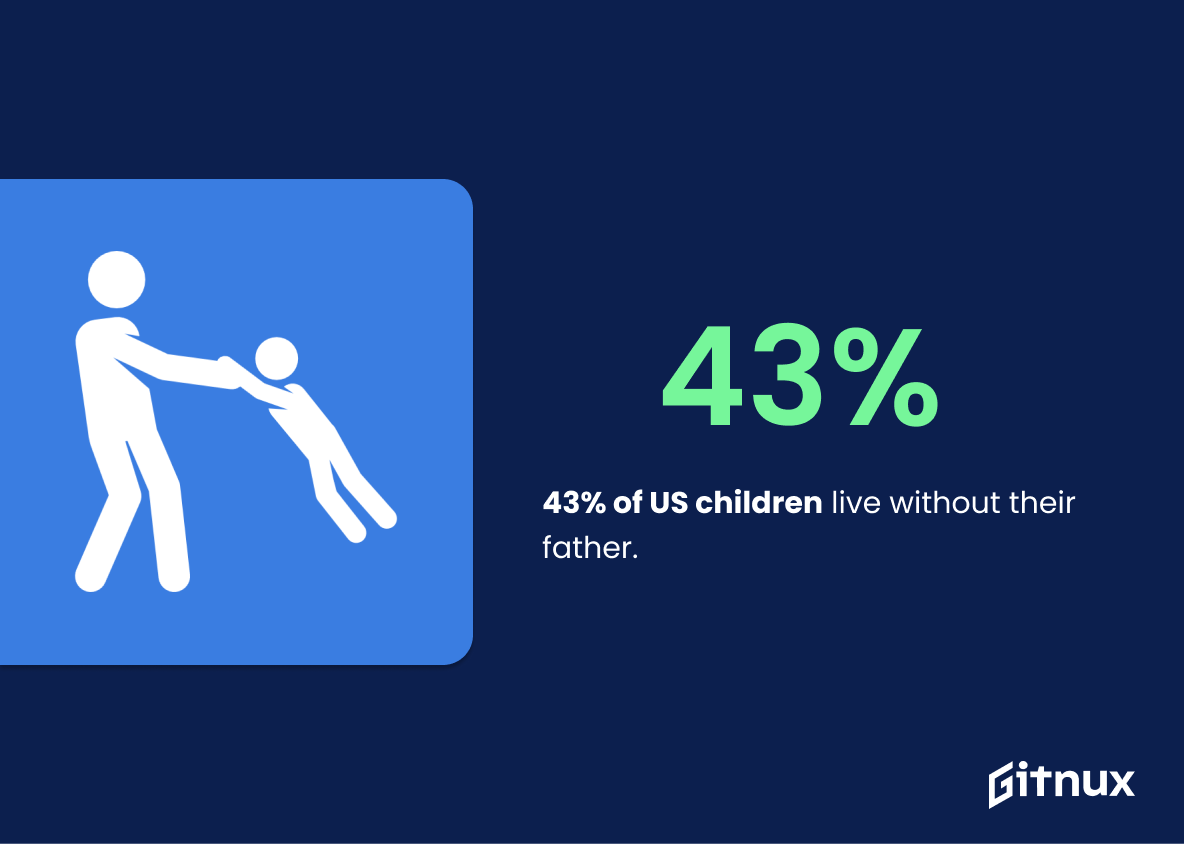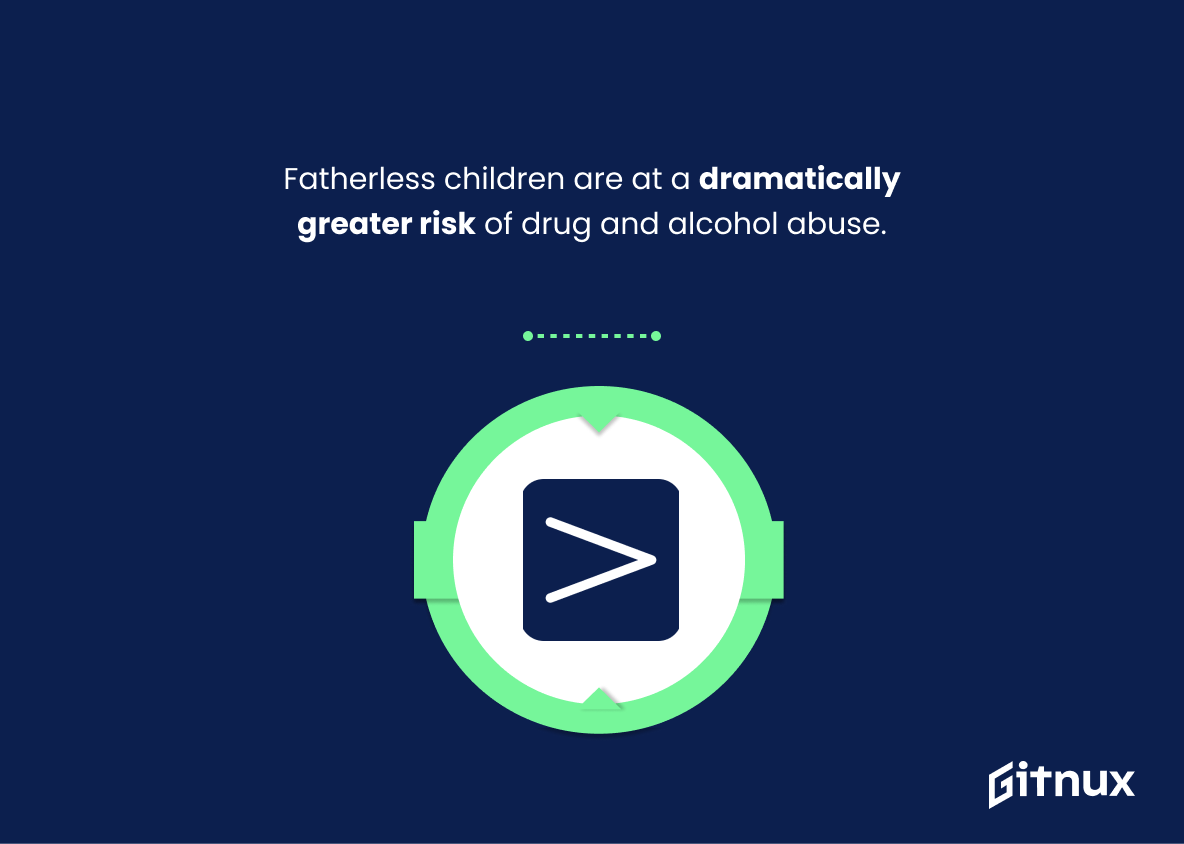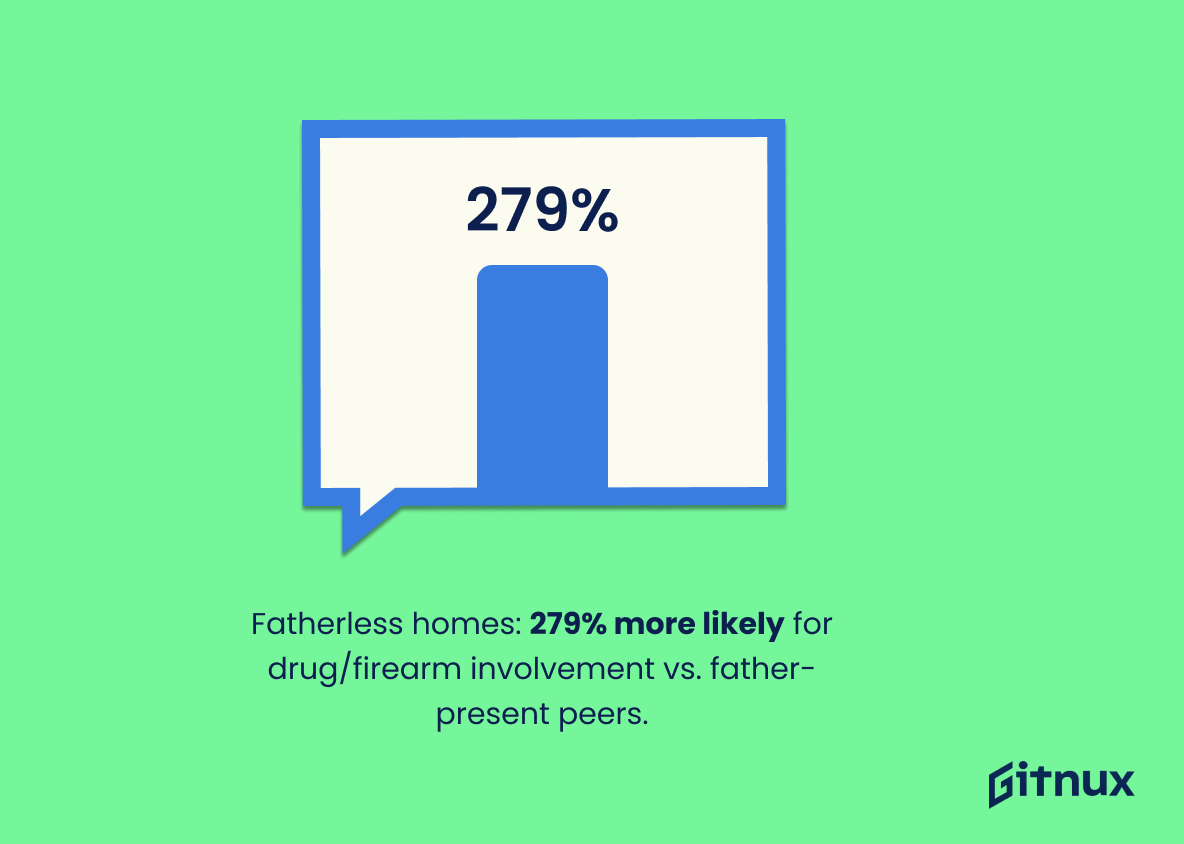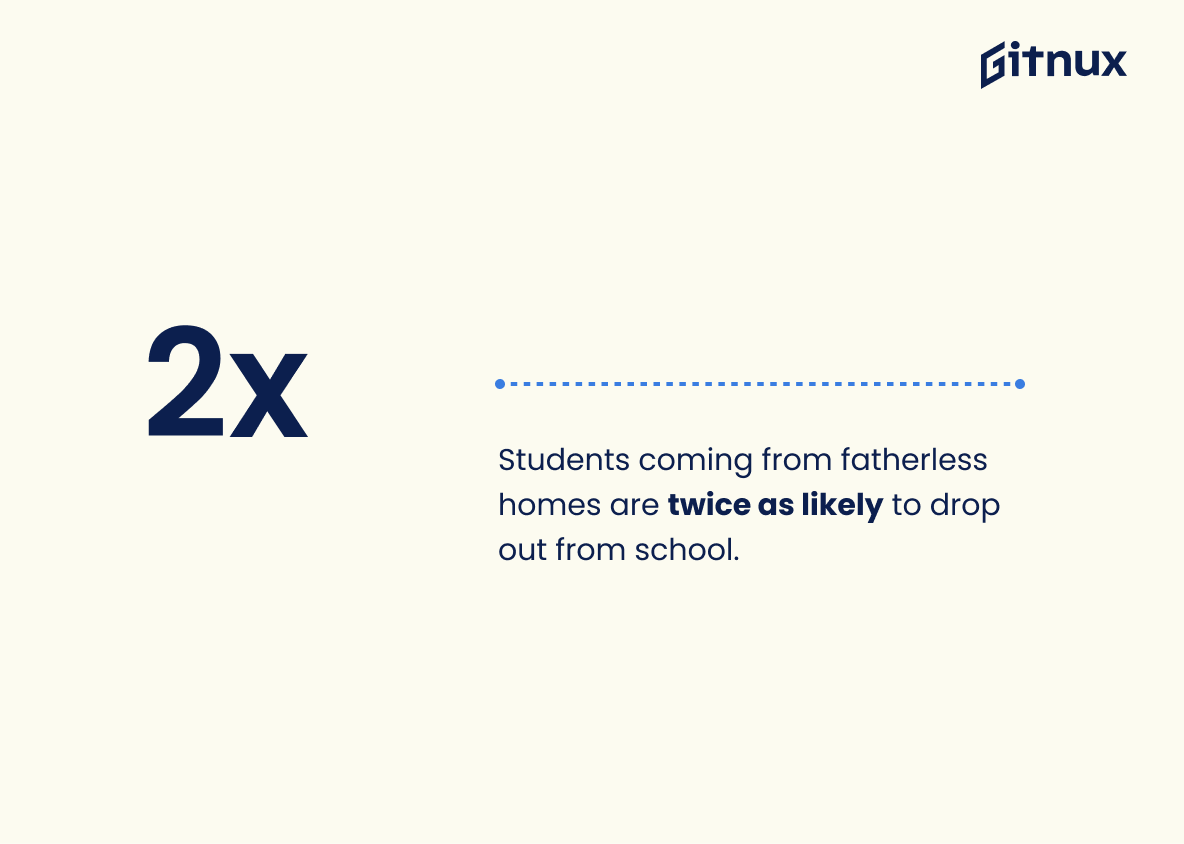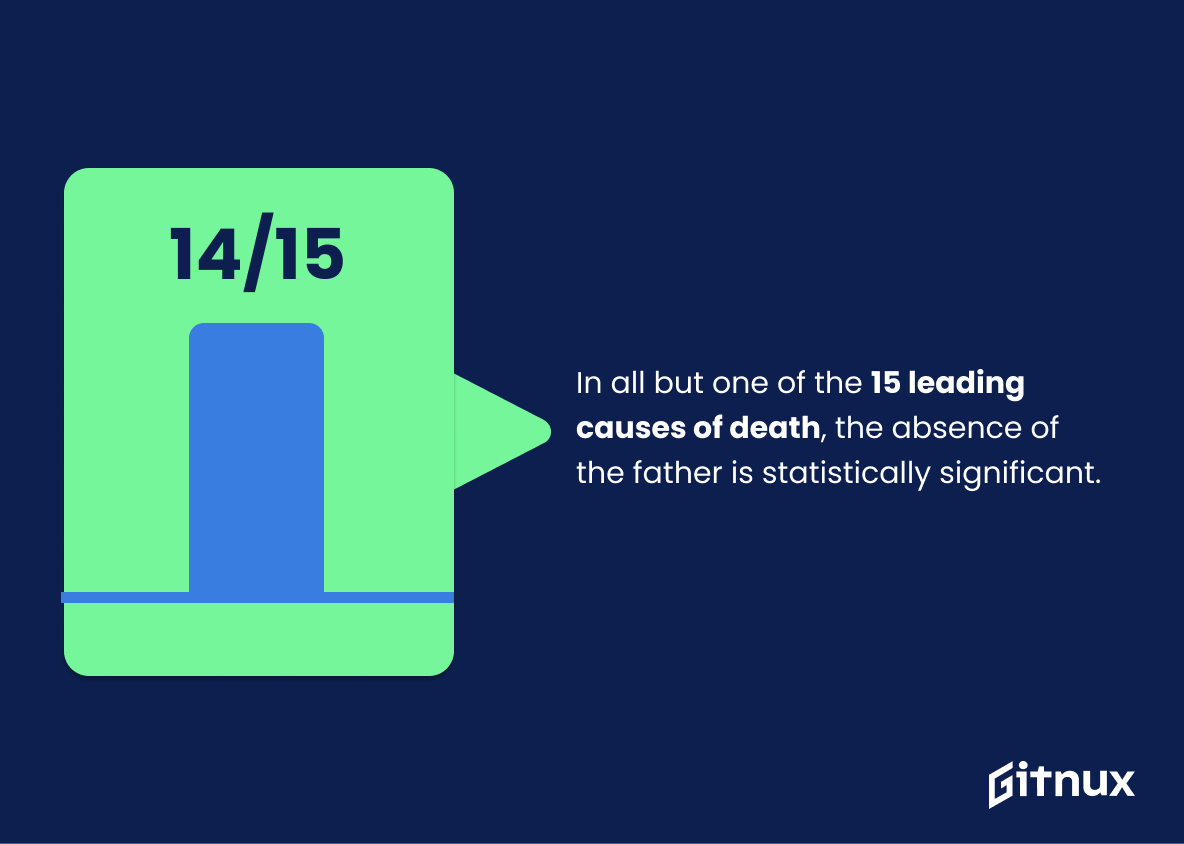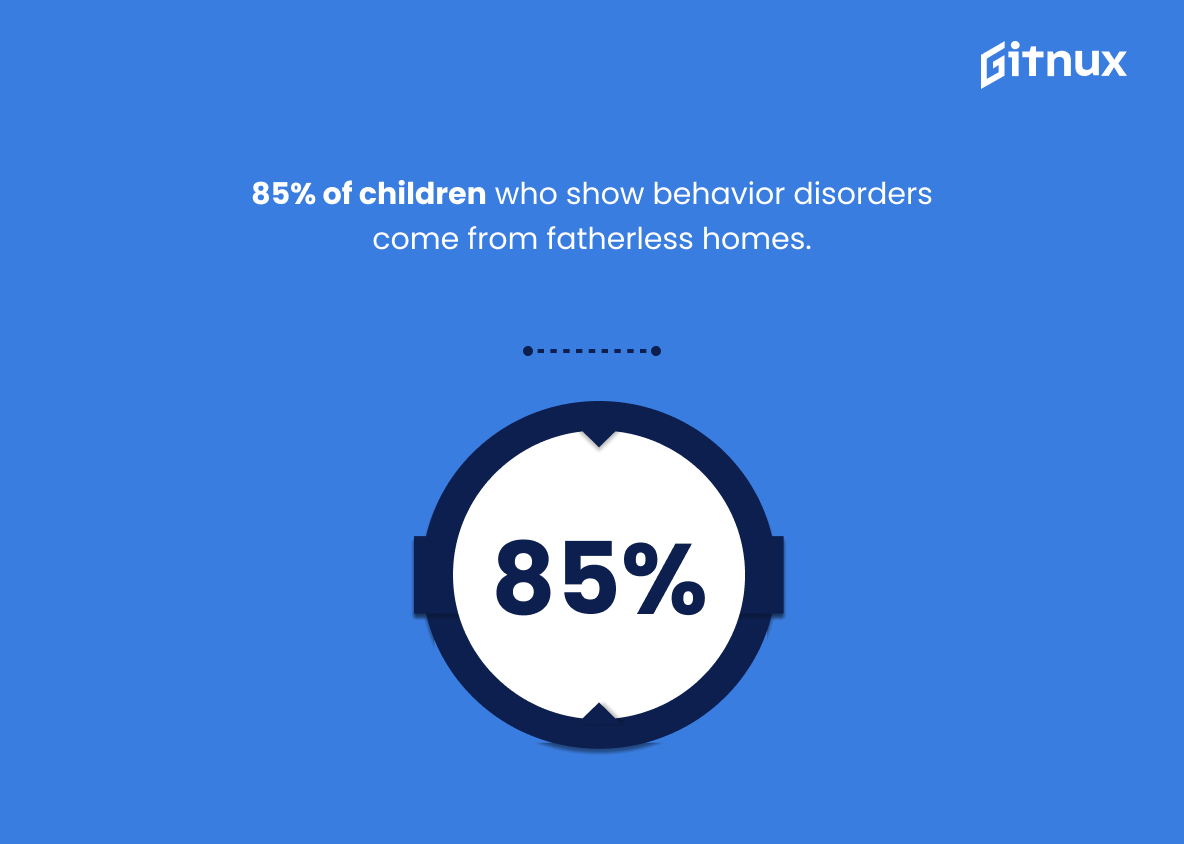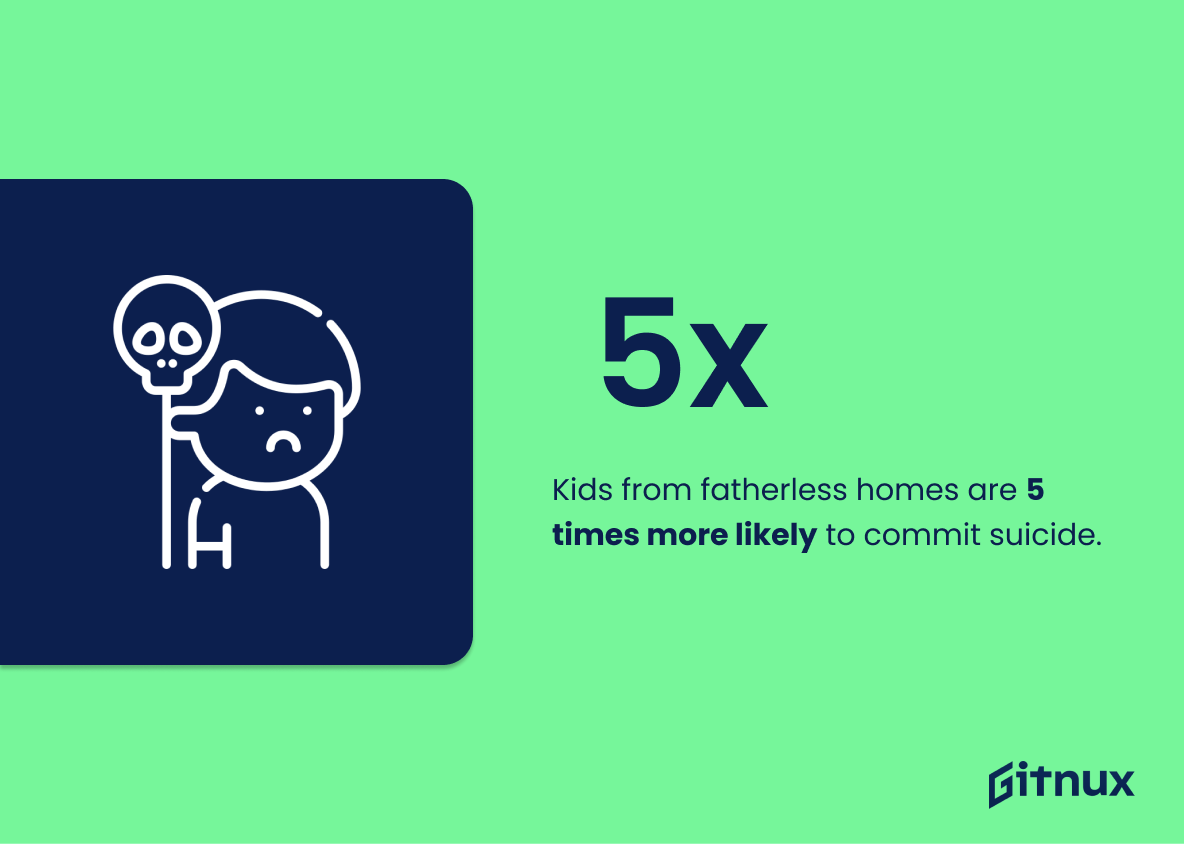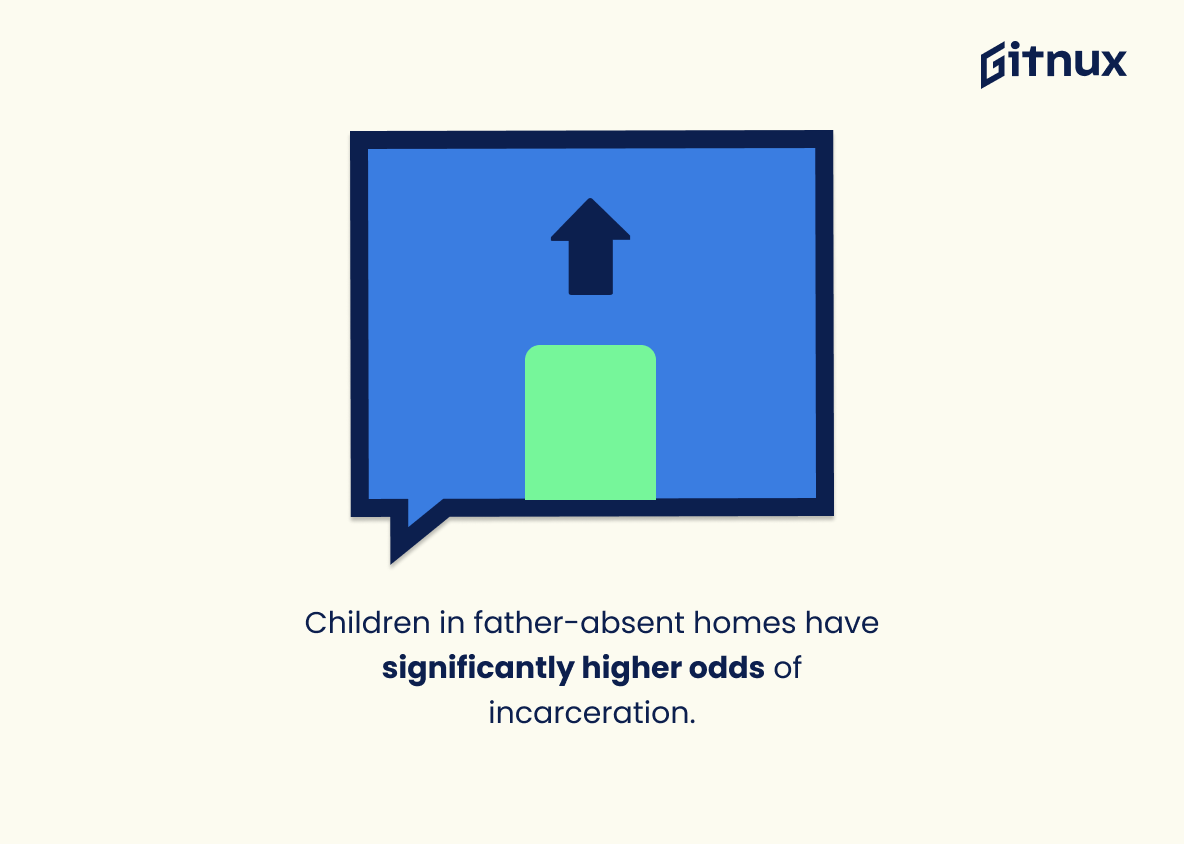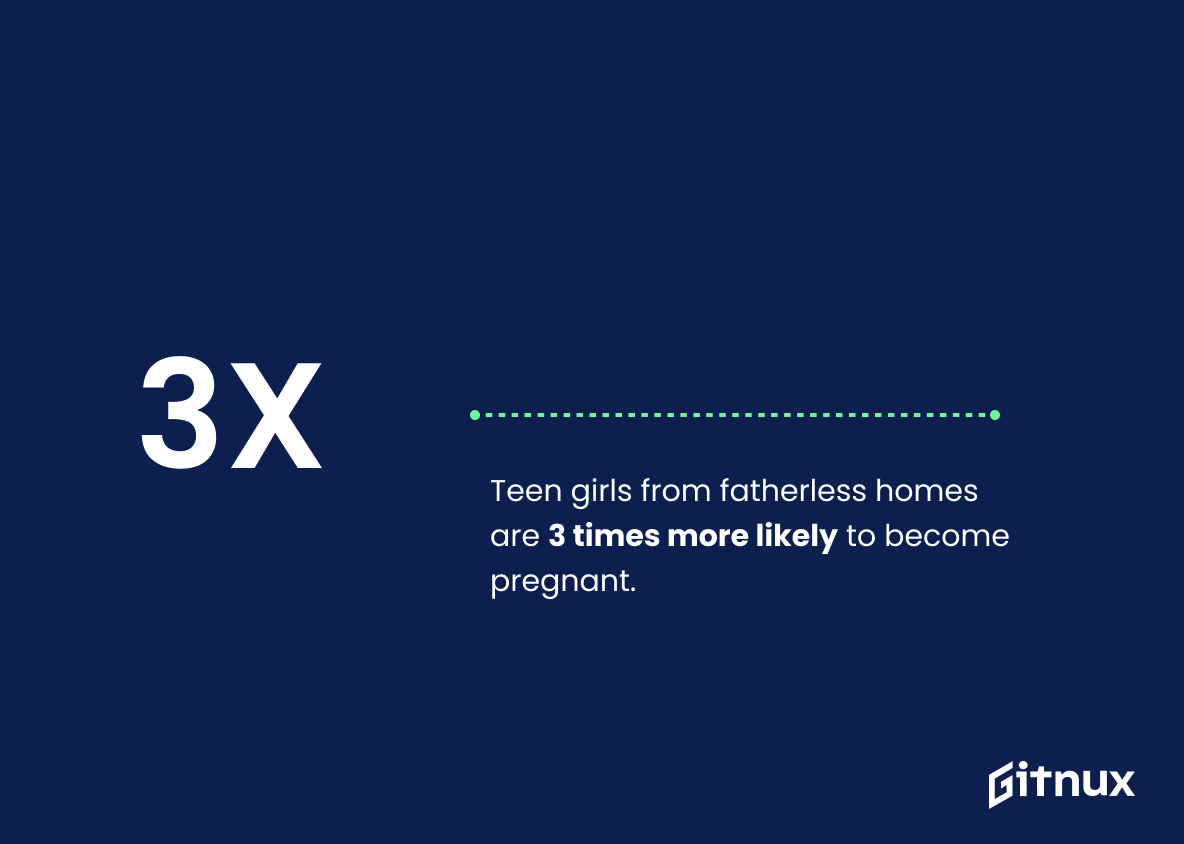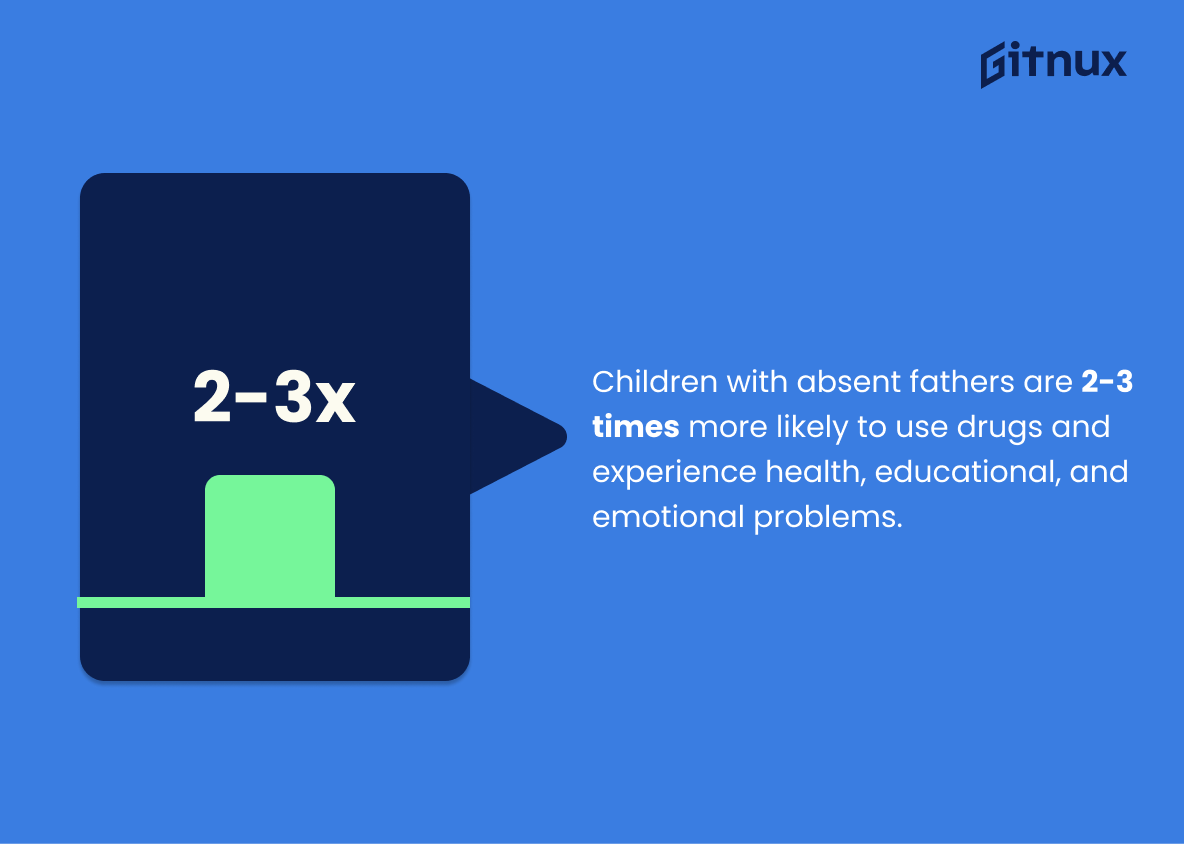The family unit is a complex tapestry, one that varies greatly from household to household. However, statistics tell us that an alarming number of these units deviate from the conventional setup due to one missing integral figure – the father. The issue of fatherless homes is not merely a domestic dichotomy, but a global phenomenon, fraught with profound implications. As we delve into the revealing world of fatherless homes statistics in this blog post, our objective is two-fold.
First, we aim to shed light on the stark realities and the magnitude of the problem that are often hidden behind closed doors. Second, we wish to foster a broader awareness and understanding of the potential adverse effects on the emotional, psychological, and social development of children growing up in these environments. Join us as we unpack this serious societal issue, not to fester in the gloom, but to inspire thought, encourage dialogue, and advocate for change.
The Latest Fatherless Homes Statistics Unveiled
43% of US children live without their father.
Delving into the realm of fatherless homes statistics, the riveting number that 43% of US children live without their father is not just a dry statistic. Rather, it loops into the tapestry of societal trends, revealing potential landscapes of childhood development and familial structures. This percentage shines a spotlight on nearly half of US children who, in their daily life adventures, lack the influence and nurturing of a paternal figure.
It fuels contemplation about the impacts of such a demographic tilt on emotional, social to academic outcomes for these children. Thus, this figure implores us to understand and address the multifaceted dynamics of fatherless homes, turning what may seem like a simple number into a pressing narrative which needs our attention and action.
90% of homeless and runaway children are from fatherless homes.
The glaring statistic that sees 90% of homeless and runaway children originating from fatherless homes serves as a crucial cornerstone in understanding the magnitude of the issues surrounding homes without fathers. In the tapestry of fatherless homes statistics, this particular thread sheds an alarming light, unraveling the oft-unseen consequences faced by children growing up without a significant paternal figure.
It crisply underlines the dire urgency to tackle the escalating situation of father absence, inherently challenging our societal structures and systems. This statistic indeed paints a somber picture, evoking strong conversations on how paternal absenteeism influences dwelling stability and the inherent risk of child homelessness.
Emphasizing such a profound statistic in our discussion poignantly deepens our understanding, triggering a greater sense of urgency and empathy towards this formidable societal problem. It empowers us to seek actionable solutions to curb the heartbreaking cycle of homelessness among children nurtured in fatherless homes.
63% of youth suicides are from fatherless homes.
Painting a vivid picture of the gravity of fatherless homes, the staggering fact that 63% of youth suicides originate from such environments cements the potential impact this can have on a young person’s mental wellbeing. This stark data point underscores the profound role that paternal figures play within their children’s lives. Shrouded in a silent tragedy often unspoken in our society, this stark statistic injects a measure of reality into our discourse about the consequences of fatherless homes, and the urgent need for effective intervention strategies.
80% of rapists motivated with displaced anger come from fatherless homes.
Understanding the immense power held within the statistic ‘80% of rapists motivated with displaced anger come from fatherless homes,’ it becomes evident how profound the imprint of fatherless homes is on societal issues. In a discussion centered around statistics concerning fatherless homes, this particular statistic offers a stark mirror to the potential psychological impacts, as it underscores the likelihood of displaced anger stemming from these environments leading to such severe consequences.
The gravity of such an insight truly lays bare the dire importance of addressing the issue of fatherless homes, as the stakes are alarmingly high. The statistic serves as a call to action – to explore and implement interventions that can mitigate the emotional vacuum left by the absence of a father figure.
Examined against a larger backdrop, this statistic acts as a linchpin for an even broader conversation about family structures, societal dysfunction, and the potential for preventative measures. Data like this challenges popular notions, inspiring more nuanced discussions about the implications of fatherless homes. It beckons us to dive deep into the complexities surrounding this issue, calling upon us not just as experts but as active members of society to take a closer look at these patterns and what we can do to break the damaging cycle.
Fatherless children are at a dramatically greater risk of drug and alcohol abuse.
Upon unraveling the layers of statistics surrounding fatherless homes, a significant revelation emerges: the harrowing link between the absence of a paternal figure and the susceptibility to substance abuse. In the grand puzzle of these phenomena, this piece forms a stark and critical image to be reckoned with. It illuminates the unseen consequences of fatherless homes, humanizing raw numbers into a stark reality of a child’s life skewed towards alcohol and drug misuse.
This finding not only paints a nuanced picture of unfortunate circumstances that befall fatherless households, but it also serves as a pressing call to action. It underscores the dire need for appropriate intervention strategies, proper familial support and effective public policies to steer children from fatherless homes away from the potential path of substance dependence. In the broader dialogue about fatherless homes, this compelling statistic pushes the discourse towards understanding prevalently overlooked aspects and consequences desperately pleading for attention.
Children raised without a father are 4 times more likely to live in poverty.
In a blog post delving into the murky waters of Fatherless Homes Statistics, one numeric beacon of concern makes an alarmingly bright flash. According to the data, children springboarding into the world sans a paternal anchor are quadrupling their odds of crashing into the harsh rocks of poverty. This statistic is not just an abstract percentage — it’s a vivid portrait of the multifaceted repercussions of fatherless homes.
Because this glaring fact underlines the socio-economic challenges burdening these households, it becomes an indispensable piece of understanding the holistic impacts of growing up without a father. Moreover, it validates the need for shared parenting, social support, and intervention mechanisms that can help children navigate the shoals of life more successfully.
Children in fatherless homes are 279% more likely to deal drugs or carry firearms for offensive purposes compared to their peers living with their father.
This colossal figure, a 279% increased likelihood of children in fatherless homes to engage in drug dealing or offensive firearm use compared to those living with their fathers, is critical in comprehending the alarming magnitude of the detrimental effects of fatherless homes. From the perspective of public safety, it is a dire warning about the potential surge in societal issues tied to drug-related crimes and firearms misuse.
By unveiling this statistic in the context of a fatherless homes blog post, we shine a stark lens on the intertwined issues of drug abuse, violence, and familial structure. It underscores the importance of positive paternal involvement and the vast implications for a child’s development and future conduct, extending past personal life into the broader community.
This severity of this statistic compels us to examine the myriad of social factors contributing to fatherless homes, revealing how the absence of a male parental figure potentially fuels delinquency. It helps us understand it’s not just about the absence of financial support but more so of emotional nurturing, guidance, and role modeling, which are key in steering children on a path away from criminal activities.
In a nutshell, this chilling statistic throws light on the urgency for societal interventions aimed at promoting involved, responsible, and committed fatherhood as a strategy to prevent juvenile delinquency and enhance the future prosperity of these susceptible children.
Students coming from fatherless homes are twice as likely to drop out from school.
Unveiling the crystal clear connection between lack of paternal presence and skyrocketing dropout rates, this stark statistic strikes a chord. It becomes a topic of pressing concern in the backdrop of our discourse on Fatherless Homes Statistics. This compelling statistic lays bare the unavoidable truth – a heightened vulnerability exists for students in fatherless homes, a predicament that manifests profoundly in their academic journey.
With a staggering likelihood of these students parting ways with formal education halfway, it underscores the critical role fathers play in the scholastic success of their offspring. The statistic stands as a beacon illuminating the urgent need for actionable strategies and support mechanisms aimed at breaking this unforgiving cycle.
In all but one of the 15 leading causes of death, the absence of the father is statistically significant.
Highlighting this intriguing statistic sets an impactful tone for a blog post on Fatherless Homes Statistics. Its significance lies in the powerful correlation it underscores, unmasking the dramatic influence a father’s absence can have on a child’s well-being, right down to death-causing factors. This potent data point serves as a wake-up call by illuminating the nontraditional risks faced by children from fatherless homes.
As such, this stat dramatically paints a picture of the profound importance and potential threats tied to paternal presence or absence, making it a vital consideration for policymakers, health and education professionals, and society as a whole.
85% of children who show behavior disorders come from fatherless homes.
Understanding the statistic that highlights 85% of children with behavior disorders originating from fatherless homes can indeed paint a vivid picture for blog post readers about the profound impact of fatherlessness on child development. This chunk of data serves as a critical fulcrum around which we pivot our understanding of the interplay between family dynamics and child behavior.
It brings to the limelight the quintessential role of paternal presence in cushioning the ill-effects of behavioral disorders among children. More importantly, it prompts an urgent call to action for reinforcing the supportive structures around these children, consequently shedding powerful insights to educators, policymakers, and society alike on the topic of fatherless homes.
Kids from fatherless homes are 5 times more likely to commit suicide.
Highlighting the startling statistic that children from fatherless homes are five times more likely to commit suicide paints a vivid picture of the mental and emotional struggles that these children may face. Within a blog post on Fatherless Homes Statistics, this figure serves as a stark wake-up call, flashing in neon lights the urgency of the problem. It underscores the critical role of a father figure in the mental well-being of children, forcing readers to look deep into the often overlooked consequences of fatherless homes.
It underscores the need for solutions – be it policy changes, therapy options, or community support structures – thereby fostering greater empathy, understanding, and action among readers. It is not a mere number, it is a cry for change.
Children in father-absent homes have significantly higher odds of incarceration.
Shedding light on the startling reality of higher incarceration rates among children from father-absent homes, creates a poignant cornerstone for this blog post on Fatherless Homes Statistics. It signifies the profound, potentially adverse effects of a missing paternal presence on a child’s future. This statistic helps to illuminate the pattern of how lack of a father figure, who often serves as a crucial role model, could influence the trajectory of a child’s life, and may even contribute to patterns of imprisonment.
Furthermore, it prompts us to delve deeper into the intricacies of father-child relationships, the psychological implications of their absence, and societal structures at large – thereby portraying a fuller, more authentic narrative surrounding fatherless homes.
Teen girls from fatherless homes are 3 times more likely to become pregnant.
Unraveling the threads of this data point, we plunge into the heart of the blog post, exposing the tangible repercussions fatherless homes cast on teenage girls. In an uncanny illustration of domino effects, it underscores that father absence escalates the likelihood of teenage pregnancies by a startling threefold.
This stark correlation highlights one of the many social ramifications that ripple out from fatherless homes, ensnaring teen girls in a cycle of early motherhood. It shapes an indispensable perspective in our narrative, elucidating the necessity for policies, programs, and societal adjustments that address the fallout of fatherless homes.
Children with absent fathers are 2-3 times more likely to use drugs and experience health, educational, and emotional problems.
In the often complex web of life, a single thread can markedly influence the entire tapestry. Delving into the fabric of fatherless homes statistics, the interweaving effect of a father’s absence illustrates the gravity of the situation on children’s well-being as per the mentioned statistic. Emphasizing this data sharpens the blog post’s focus, magnifying how children with absent fathers face amplified risks of straying towards drug use and grappling with health, educational, and emotional issues.
The statistic is a somber clarion call, awakening our communal consciousness to the plights and hurdles these children confront in their daily lives. Notably, it paints a stark picture of not just the current reality but also potentially charts their trajectory into adulthood. It harbors the potential to ignite conversations around societal issues, spark timely interventions and inspire reformative policies to curtail this disruption to children’s healthy growth.
A salient point of the blog post is to elevate comprehension about the pervasiveness and severity of the problem, thereby fostering empathy and proactive change. The weight of this statistic in the narrative, therefore, cannot be overstated. The purpose of statistics is to clarify, to slice through complexity with simplicity and veracity, so collectively, we can respond with the necessary nuanced understanding and the will to positively alter the course of these young lives.
Conclusion
The rise in fatherless homes is a critical issue that can’t be overlooked given its far-reaching social, emotional, and psychological implications. Unmistakably, the statistics we’ve discussed illustrate the profound effects of this trend on children, potentially leading to behavioural issues, educational deficiencies, and future economic struggles.
As a society, these statistics serve as a call to action for us to support single parents, promote the role of fathers, and provide structures that encourage the active involvement of both parents—regardless of their living situation— in their children’s lives. Drawing attention to and addressing this issue is a collective responsibility that will benefit not only our current generation but future ones as well.
References
0. – https://www.www.fatherhood.org
1. – https://www.www.ncbi.nlm.nih.gov
2. – https://www.www.dosomething.org
3. – https://www.patriotpost.us
4. – https://www.www.usnews.com
5. – https://www.thefatherlessgeneration.wordpress.com
6. – https://www.www.focusonthefamily.com
7. – https://www.www.thefix.com
8. – https://www.www.washingtontimes.com
9. – https://www.www.deltabravo.net
10. – https://www.www.sciencedaily.com
11. – https://www.www.huffpost.com
